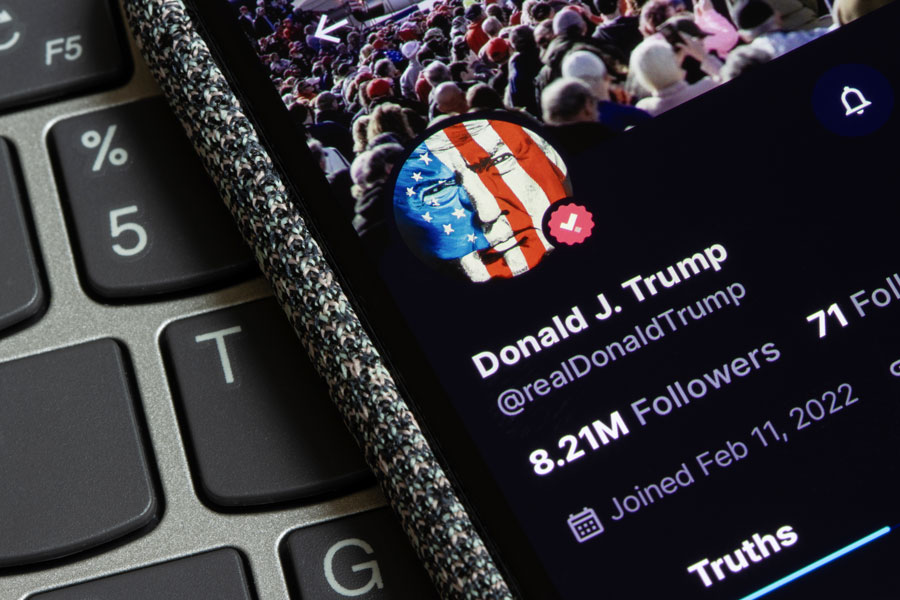
WASHINGTON, D.C. – President Donald Trump posted a digitally generated video to his Truth Social account this week, depicting a simulated arrest of former President Barack Obama. The video, created using artificial intelligence, shows Obama being handcuffed in the Oval Office and later wearing an orange prison uniform, accompanied by music and imagery associated with mock or satirical content.
The video, which runs approximately 45 seconds, includes prior real-life footage of prominent political figures – including Obama and Leading Democrat Rep. Nancy Pelosi – stating “no one is above the law.” These clips serve as a preface to the AI-manipulated sequence, which portrays Obama being escorted by federal agents.
While the video does not include any disclaimer regarding its artificial nature, it is widely acknowledged to be a deepfake – a term used to describe synthetic media generated using AI to create realistic but fictional content. The video was previously circulated on platforms like TikTok before being reposted by the former president.
The timing of the post follows a recent announcement by Tulsi Gabbard, a former congresswoman who currently serves as Director of National Intelligence in the Trump campaign. Gabbard revealed that a set of newly declassified documents, released over the weekend, allegedly outline efforts by federal officials under the Obama administration to undermine Trump’s 2016 election campaign. The claims have been forwarded to the Department of Justice for review as a criminal referral recommending criminal investigation or prosecution.
In the days following the video’s release, media outlets and political commentators have weighed in with varying responses. Some have expressed concern about the broader implications of AI-generated political content, especially during an election year. Others have pointed to the post as a form of political commentary amid ongoing debates about past intelligence activities and government transparency.
What Happens If the DOJ Takes Up a Criminal Referral?
If the U.S. Department of Justice (DOJ) chooses to act on the criminal referral it initiates a formal internal review. DOJ officials first assess the substance of the referral to determine whether it contains credible legal grounds for investigation. If the claims are found to merit further inquiry, the department may open a full criminal investigation and assign federal agents, often from the FBI, to gather evidence and conduct interviews.
From there, the case may escalate to a grand jury, which can issue subpoenas and compel testimony under oath. Prosecutors evaluate the evidence to determine if federal charges are appropriate, based on whether there is probable cause and a reasonable likelihood of conviction. If charges are deemed warranted, the DOJ may file a criminal complaint or seek a formal indictment. For high-profile cases involving current or former government officials, the process may involve additional oversight or a special counsel, and public disclosure usually follows once charges are filed or an indictment is unsealed.
As of this report, there has been no official comment from former President Obama or his representatives regarding the video.
Top 10 Questions About the AI Video and Criminal Referral
- What does the AI-generated video show?
The video, shared by Donald Trump on Truth Social, depicts an artificial scene of Barack Obama being arrested and jailed, using deepfake technology and edited real-world clips. - Who created the video and why is it significant?
The video appears to have originated from a pro-Trump TikTok account and was reposted by Trump. Its significance lies in its timing and political implications, especially following Tulsi Gabbard’s criminal referral announcement. - What did Tulsi Gabbard reveal?
Gabbard, serving in an intelligence role within Trump’s campaign, claims that newly declassified documents show a coordinated effort by Obama-era officials to undermine Trump’s 2016 election through misuse of federal surveillance tools. - Are Gabbard’s claims verified?
As of now, the claims are public but not independently verified. The DOJ has not commented, and no formal legal findings have been released based on the declassified documents. - What is a criminal referral and why does it matter?
A criminal referral is a formal request to the Department of Justice to investigate and potentially prosecute an individual or group for alleged illegal activity. If taken up, it could lead to an official investigation and legal action. - What happens if the DOJ takes up the referral?
The DOJ would review the evidence, potentially open a formal investigation, gather more documentation and testimony, and—if warranted—file charges through a grand jury or direct indictment. - Is this the first time accusations like this have been made about the 2016 election?
No. Allegations about surveillance abuses and political targeting have circulated since the original Crossfire Hurricane investigation. However, this is among the first times a formal criminal referral has been made by someone tied to Trump’s current campaign. - Why is the use of AI in political content controversial?
AI-generated deepfakes can be highly convincing and misleading. They raise ethical concerns, especially when used in political campaigns to portray fictional scenarios involving real individuals. - Has Obama responded to the video or referral?
As of this report, there has been no official response from former President Obama or his representatives regarding the video or Gabbard’s allegations. - Could the video or referral impact the 2024 presidential race?
It’s possible. Both may fuel partisan narratives and influence public opinion, especially among voters already engaged in political discourse online. The broader concern is how synthetic media and legal maneuvers shape the conversation leading up to the election.


